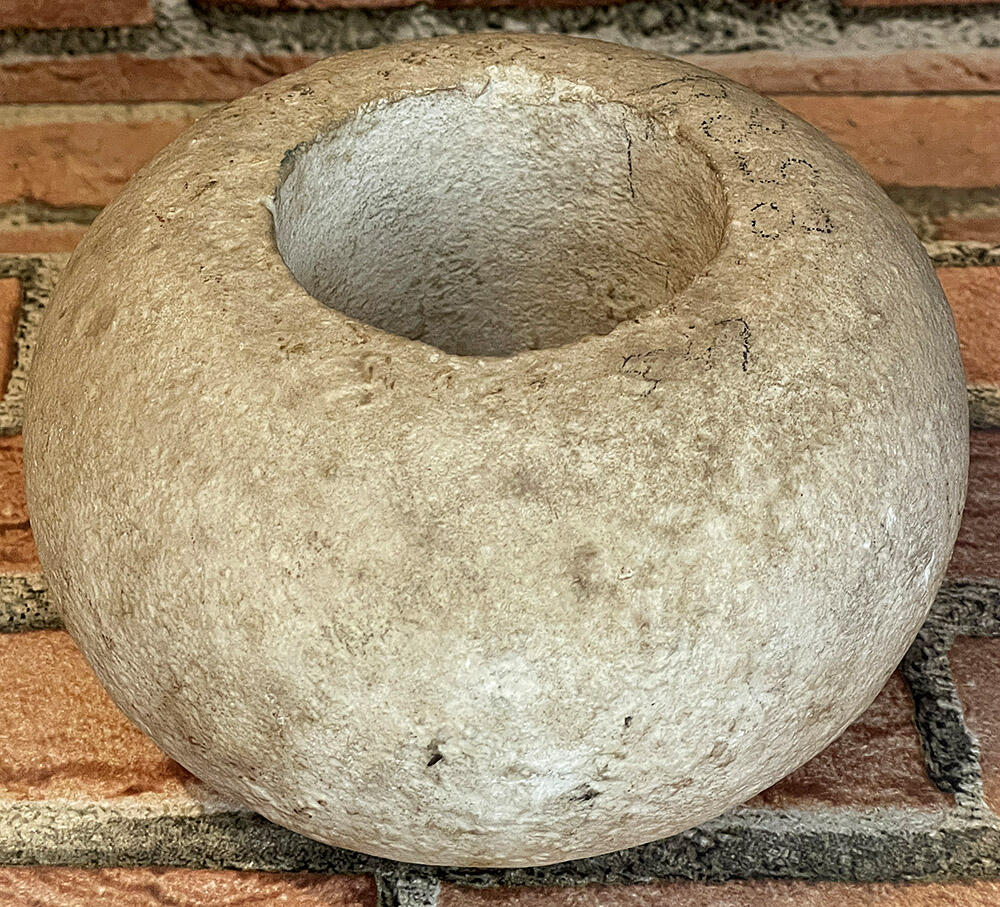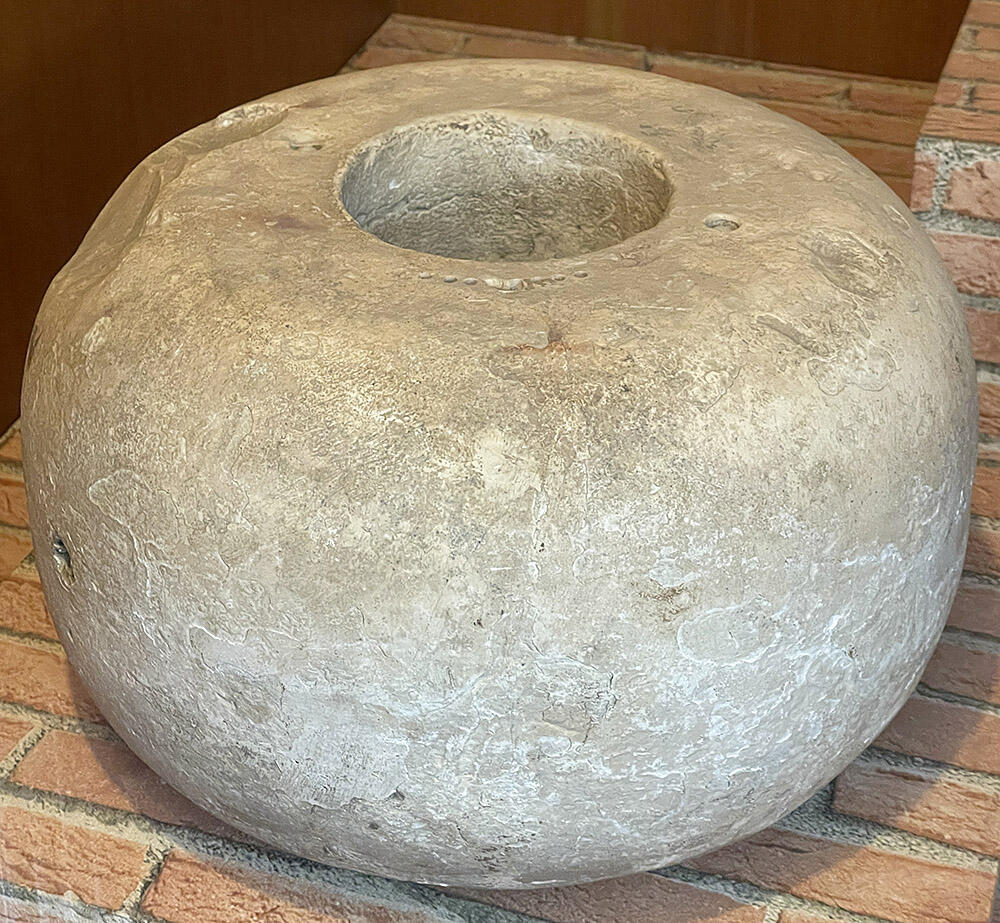While it may be surmised that these two circular stones are well-placed in the yoni display case (see linga for Marshall's discussion), Dr. Kenoyer writes of these objects (Ancient Cities , p. 109):
"The circle is also a protective symbol that surrounds an object or the wearer with defense against evil powers (still used in the wedding band). Circles and wavy lines are commonly painted around pottery as part of the design, but they also may have had ritual significance as a protective bond. Some ancient pottery from Neolithic and Chalcolithic sites had single or double lines that often ended in the head of a snake. In later Indus pottery, snakes are never painted on the vessels, but single and multiple lines encircle pottery, often becoming the only design element (see cat. nos. 179, 180). Rings and wavy rings that were not used as body ornaments were made of stone, shell and clay. Many earlier scholars identified these objects as female fertility symbols, but they could have had varied uses and meanings. The shell wavy rings (fig. 6.10) probably decorated the handle of a staff or baton. Larger stone rings were used as column bases at the site of Dholavira (see Chap. 3, fig. 3.9), and numerous large ringstones have been found at Mohenjo-daro and Harappa.
"The precise use of these massive stone rings probably differed from one generation to the next; the fact that many are broken and scattered over the sites may indicate that they were re-used. At Harappa, excavators recently found wavy ringstone fragments near the main gateway at the southeastern corner of Mound E, possibly parts of massive pillars in the gateway area. Use as a pillar component does not diminish the symbolic significance of these objects, for in prominent contexts such as gateways, they would have been seen by everyone entering or leaving a city."
Ringstones are definitely used for column bases as is well known from the site of Dholavira and also a tablet from Lakhanjodaro
See also white limestone ringstone or a recent find at Harappa.




